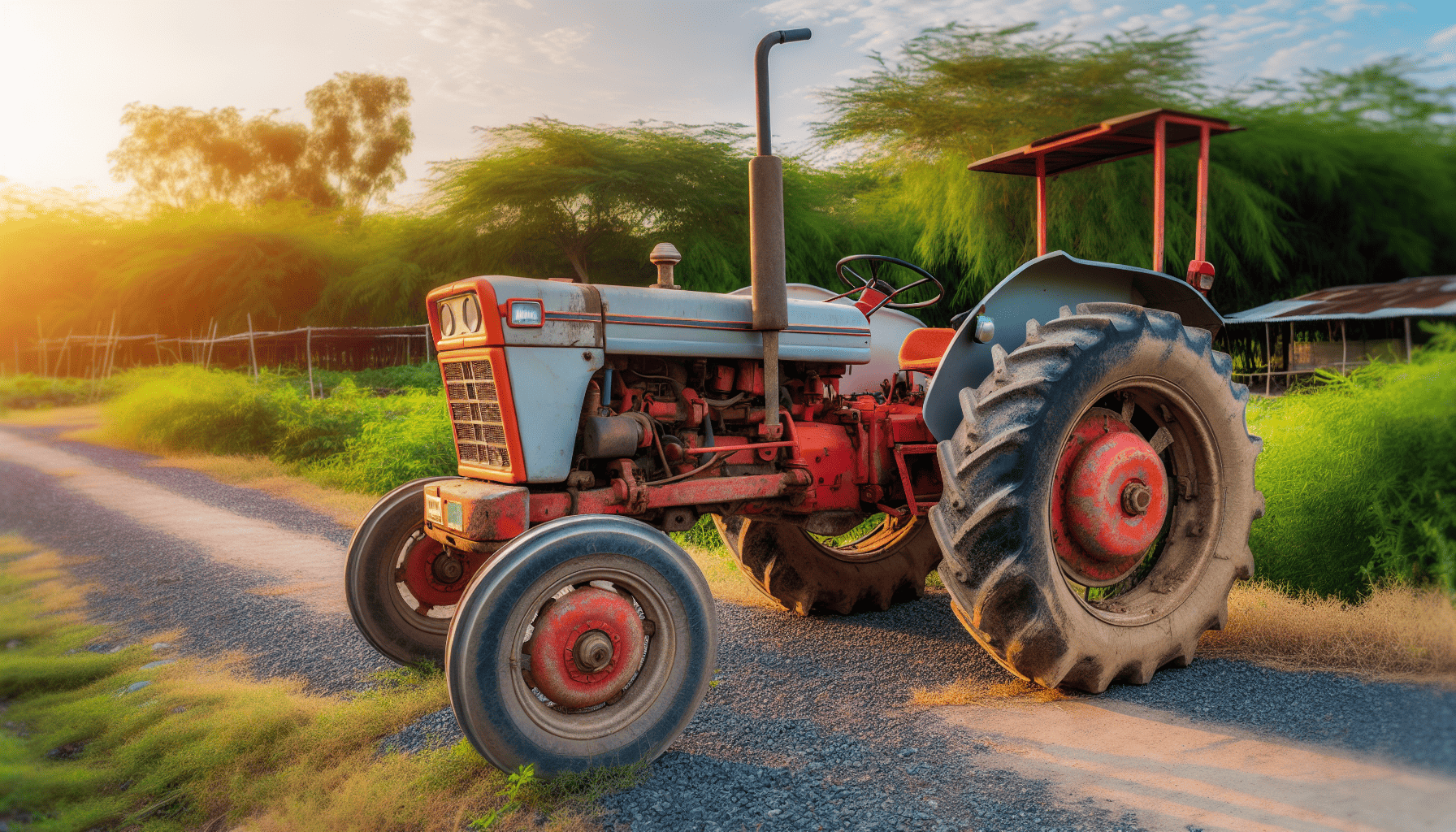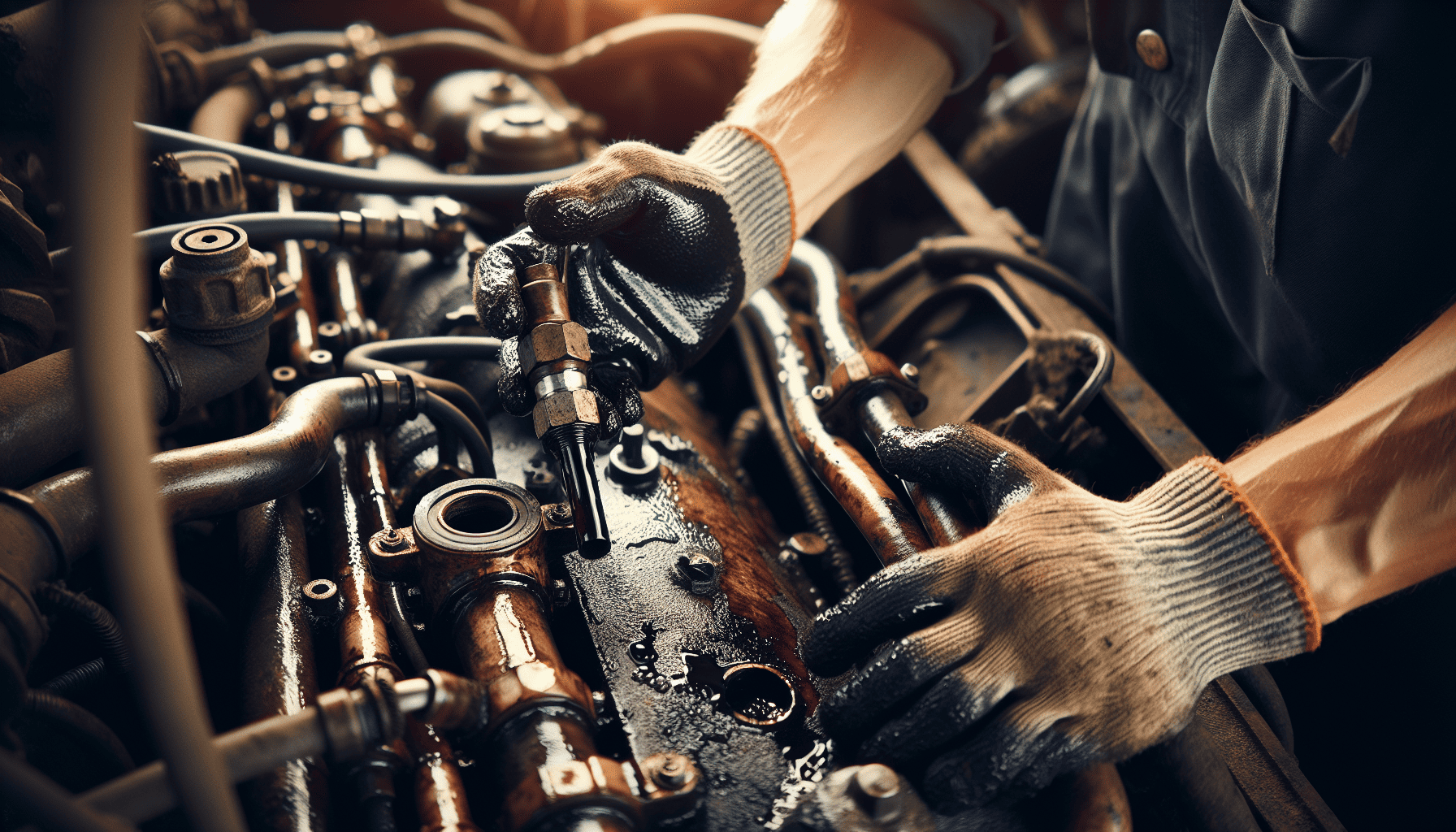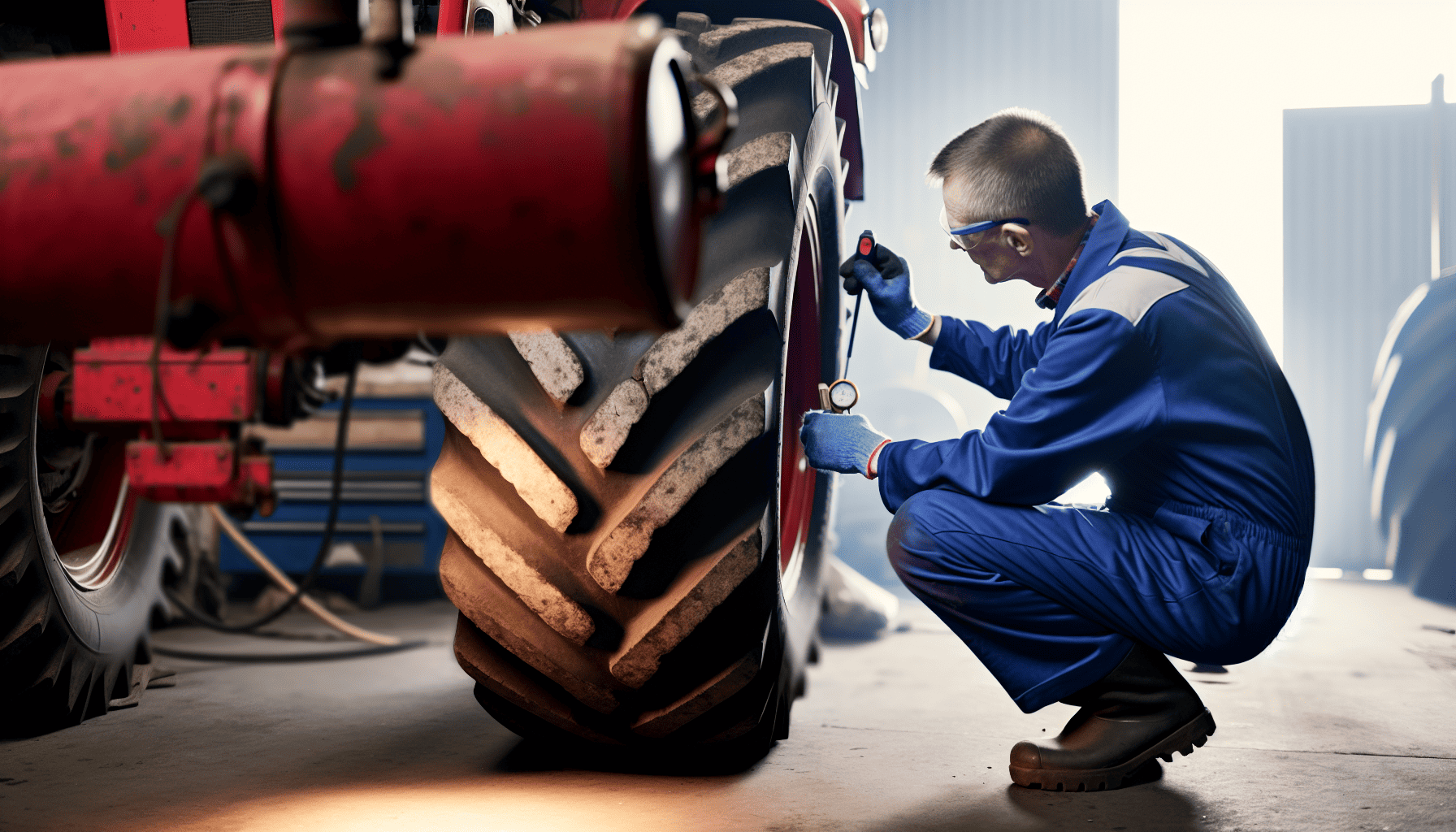Essential Buying a Used Tractor Checklist: What Every Buyer Must Inspect
Ready to step into the world of farming with a used tractor? Hold your horses! Buying a used tractor can be a journey filled with potholes if you don’t know what to look for. That’s why we’ve created the “buying a used tractor checklist” to guide you through the ins and outs of making a wise investment in a used tractor. Buckle up as we navigate through engine inspections, tire evaluations, hydraulic system examinations, and much more.
Key Takeaways
Thoroughly inspect engine, tires, hydraulic system & more when buying a used tractor.
Analyze maintenance logs and test drive to check steering wheel, gears & brakes.
Research seller & consider resale value for informed decision making on cost + convenience.
Essential Checklist for Buying a Used Tractor

If you’re in the market for a used tractor, there are some important steps to take when assessing its worth. Start with an inspection and make sure it is visually appealing as well as structurally sound. Take special care to check the engine, tires, and hydraulic system for any signs of rust or damage that might indicate poor storage conditions or neglectful maintenance practices – such as dents, touch-up paint jobs, or metal shards at moving parts. It’s also beneficial to get up close with the machine yourself so you can personally gauge how good it really is before purchasing!
Engine Inspection

The engine is the driving force behind a tractor’s operation, and it needs to be cared for properly in order to ensure maximum efficiency. Start by regularly assessing the engine oil level at the oil filler cap, if there are any black deposits or sludge present then this can point towards potentially costly issues. Examine that no metal particles, foam or water have infiltrated into the lubricant itself. Don’t forget about potential leaks either. Make sure all emissions requirements are met as well as checking air filters, coolants and radiator caps for irregularities in sound or functioning condition respectively. By maintaining regular maintenance checks on your vehicle’s main power source you will prolong its lifespan substantially!
Tire Evaluation

When purchasing a used tractor, it’s important to pay attention to the tires. Tractor tires are created for rugged terrain. They aren’t impervious. Utilizing a tire gauge can give you an idea of how much life is left in them by measuring the tread depth and looking out for any abnormalities that could signal misalignment or suspension problems with your tractor. Bear in mind that replacing these tires may be expensive, which means getting yourself into what seems like a great deal might actually end up being more expensive than anticipated.
Hydraulic System Examination

The hydraulic system of a tractor, which is powered by its key element – the hydraulic tank, powers many functions. Should you observe any leakage or lessened performance from your vehicle, oil puddles or strange noises like high-pitched sounds may indicate there’s something wrong that needs to be attended to professionally.
Checking the level of fluid in your hydraulics is another must and requires parking on flat land while locating the pump and connected lines with an eye towards making sure it falls between the min/max markers set out for such a task. Check if the number of outlets providing access to these services are according too as this impacts efficiency greatly. Take time to examine the front axle oil park when looking after keeping machines running well!
Analyzing Maintenance Logs and Supporting Documents
When evaluating a tractor, its past care is just as important as examining the internals and going for a test drive. To get an accurate picture of the maintenance history, one must look at the relevant records, logs outlining what work has been done on it and any accompanying documents that provide detail such as labor costs or repairs made.
These details can reveal many aspects about how well-maintained a tractor is. They should include dates when service was last completed along with inspections carried out, types of services performed (such as regular upkeep), replacements required or other fixes implemented. Invoices will support this data by stating exactly which parts were purchased plus extra charges if any incurred. A thorough review could expose potential issues like missing information in logbooks inconsistent notes among themor irregular intervals between servicing episodes and excessive fixing needs to name some examples. All these factors combined present invaluable insights into understanding whether buying said used tractor would be wise after all.
Test Driving and Operational Inspection
Test driving a used tractor offers more than the excitement of riding it. It’s an occasion to evaluate its steering, gears, brakes and efficiency in general. During your check out session, be certain that turning the wheel is done with ease. Tightness may indicate that greasing or replacing hydraulic cylinders are necessary steps for repair work. Also take note if there’s any swaying or relaxation since this might show damage on the main pin which needs repairing right away before additional difficulties arise.
Have a closer look at how and when each gear engages – slipping or chattering while shifting could mean issues with transmission whereas engine sound maintaining consistency despite movement would point towards worn-out clutch requiring urgent attention.
Finally, inspecting brakes should never be overlooked as they must guarantee proper control over machine functioning ensuring secure operations for every ride taken by this vintage tractor.
Evaluating Safety Features and Electronics
When it comes to the operation of a row crop tractor, safety is of utmost importance and should be checked before any use. Rollover protection structures (ROPS), seat belts, and safety switches must all be properly functioning before operating your machine. Make sure that protective gear such as helmets gloves & eye wear were being used by its previous owner correctly for added peace-of-mind when in cabbed tractors with seatbelts installed on them.
Apart from these measures already taken, there are also other electronic components which need attention ensuring their proper working order – flashers, dash lights, headlights etc., since they can potentially hinder performance or create hazards if faulty thus making an effective maintenance routine necessary to maintain productivity along with safety at optimal levels. Ultimately, we can conclude that though many factors contribute towards safe usage, no tractor’s condition will ever fully exceed the weaknesses of its poorest performing part so correct upkeep needs to remain priority one!
Assessing Horsepower and Power Take-Off (PTO)
When it comes to tractors, horsepower is indicative of how much workload the machine can take on. To make sure your tractor will be able to cope with what you demand from it and possible future projects, aim for an engine which produces 10-20% more power than required. Consider torque and RPM when assessing its capacity.
The Power Take Off (PTO) shaft plays a significant role in running farm equipment such as grain carts or manure spreaders that require mechanical force – having enough PTO capabilities means this work won’t get held up due to inadequate resources being put into action!
Investigating the Seller and Resale Value
Before concluding the deal, it is essential to carry out a full research into the seller’s background. Knowing that you are working with someone dependable will provide comfort. Take some time reviewing customer reviews and feedbacks for more info about their reputation.
When purchasing a tractor (whether new or used), evaluate its future resale value. Brands such as New Holland or John Deere normally perform quite well in this regard – yet other factors need assessing too: condition of machine, age/brand/model type and dealer input may all be aspects worth considering when gauging what price could possibly be fetched once resold at a later date.
Post-Purchase Maintenance and Care

After procuring the tractor, it is essential to regularly look after it. Examining oil levels and coolant levels. To inspect the air filter and check tire pressure are all factors that should be consistently evaluated as they can go a long way towards avoiding difficulties later on.
Creating an upkeep logbook of repairs/maintenance jobs you’ve done will help keep track of when each task was performed. This simple action could make problem solving simpler down the road while helping preserve an orderly maintenance regimen for your vehicle – (namely) the tractor.
Choosing Between Two-Wheel Drive (2WD) and Four-Wheel Drive (4WD)
When considering which kind of tractor to buy, farmers should weigh the benefits and drawbacks between a two-wheel drive (2WD) or four-wheel drive (4WD). 2WD tractors are usually suitable for smaller operations such as livestock management, landscaping projects and mowing. In contrast, 4x4s tend to provide greater grip on more challenging terrain surfaces due to their added power when all four wheels spin simultaneously. Investing in used tractors is often an economical option too. It’s also worth noting that 4WD units can be easier resold later down the line compared to 2 WD models.
Comfort and Operator Station Inspection
The comfort and convenience of the operator station during long tractor operation is paramount. All components must be carefully designed to create an efficient yet pleasant working environment, especially with regards to the controls which play a crucial role in ease-of-use and safety for operators.
Rollover Protective Structures (RoPS), flashing amber lights for road travel, rear tail/work lights, mudguards as well as side lighting should all be checked while seat adjustments can help provide optimum back angle support coupled with lumbar assistance. Windows and mirrors should also be positioned correctly allowing visibility into the cabin from any point whilst good interior illumination adds improved clarity within this area too, minimising blind spots thus boosting awareness levels considerably in turn resulting less stress on those operating it.
Considering Maintenance Costs and Convenience
Owning a used tractor can require maintenance and repairs, with some additional costs that may not be apparent upfront. To understand the total cost of ownership, consider how often you need to perform upkeep like oil level checks or filter changes, what kind of service is required, and any related yearly expenses such as fuel, fluids or necessary repair work. Each make/brand has different quality standards for parts availability which will affect your expenditure on upkeep over time – so check if there’s an easy-to-access mechanic nearby who could help out when needed. All these factors should go into making an educated decision about getting a used tractor – looking beyond initial investment outlays alone!
Summary
When purchasing a used tractor, you should make sure to carefully inspect all aspects from the engine and tires to hydraulic system safety features, electronics, and maintenance records. Assess future upkeep costs as well. Be mindful of the seller’s standing along with resale value too. Do not skimp on horsepower or PTO capabilities when deciding between two-wheel drive (2WD) vs four-wheel drive (4WD), but put your own comfort first in any case. With this advice in mind (taking into account every detail involved) you armed yourself for making an informed decision about buying a used tractor!
Frequently Asked Questions
How to check a used tractor?
An inspection of the frame and axles should be carried out to detect any repair welds. Dirt around joints or fittings could signify a leak. It’s important to check both the front and rear engine transmission seals for possible signs of wear or aging, which may hint at how long this tractor has been dormant.
How many hours is high for a used tractor?
The life expectancy of an engine in a used tractor should stay within the 5,000-10,000 hours range for it to continue performing well. Anything beyond this amount is likely too much and not recommended.
What are the top 10 pre operational checks for driving a tractor?
Before taking off in your tractor, it’s crucial to examine for any fluid leakage, broken parts and dirt/trash build up. You should inspect the lights as well as reflectors for damage or lack of visibility, and check if the battery is both charged and cleanly kept. Last but not least, making sure there aren’t missing bolts nor fire extinguishers.
Ensuring all these things are met can make certain a secure ride.
How can I tell if a used tractor’s engine is running well?
Ensure the engine is in good running condition by listening for a steady start-up, observing any smoke or tremors and verifying there are no leaks or that emissions regulations have been met with regards to the tractor.
What should I look for when inspecting a used tractor’s tires?
Using a tire gauge, inspect the tread depth and check for any uneven wear on your tires that might be an indication of alignment or suspension problems.



